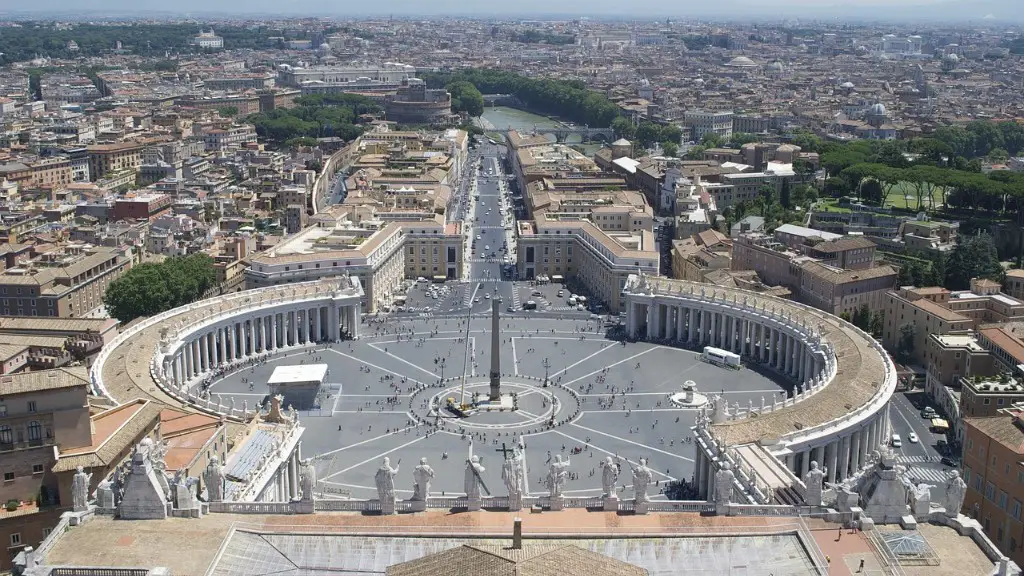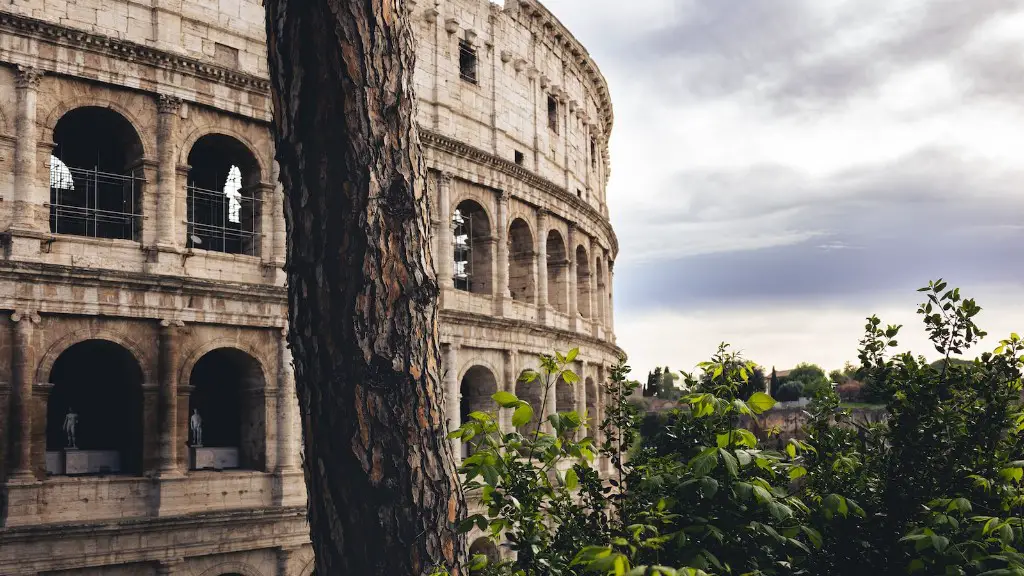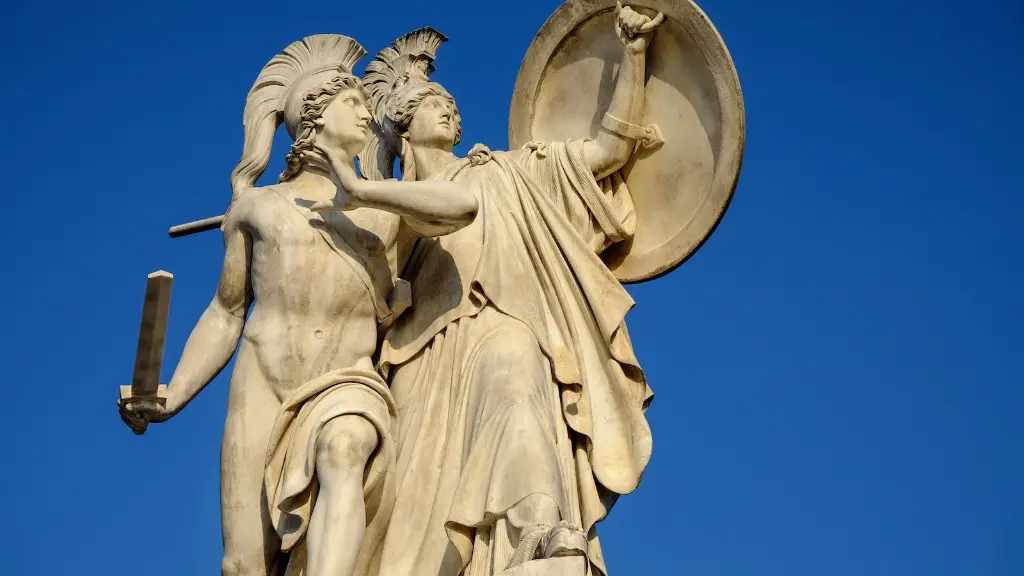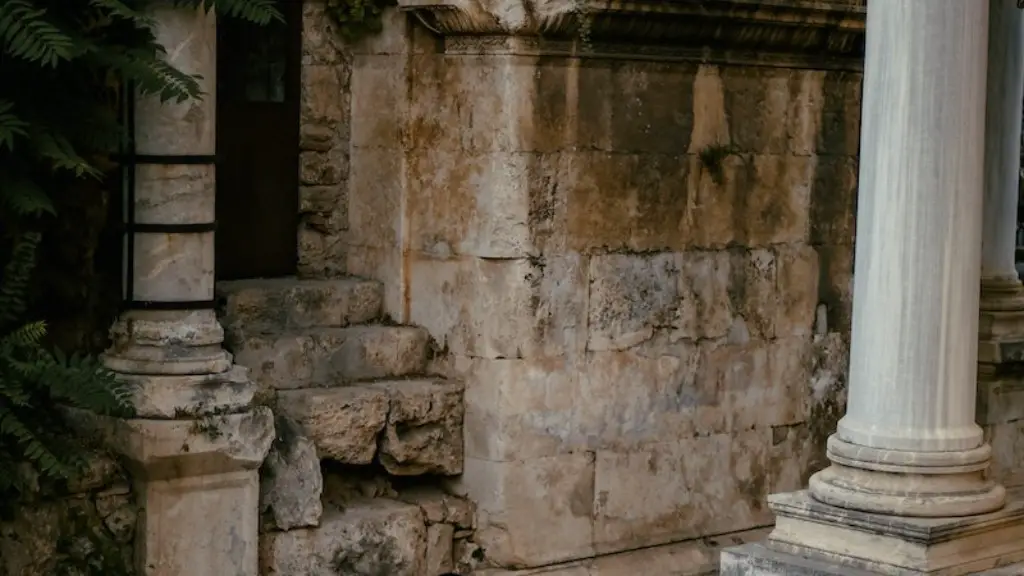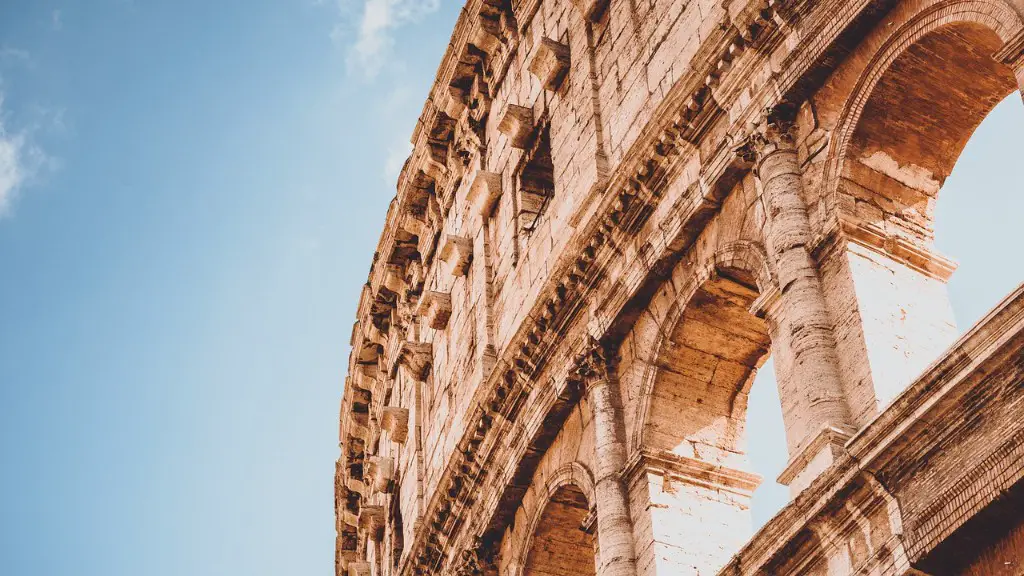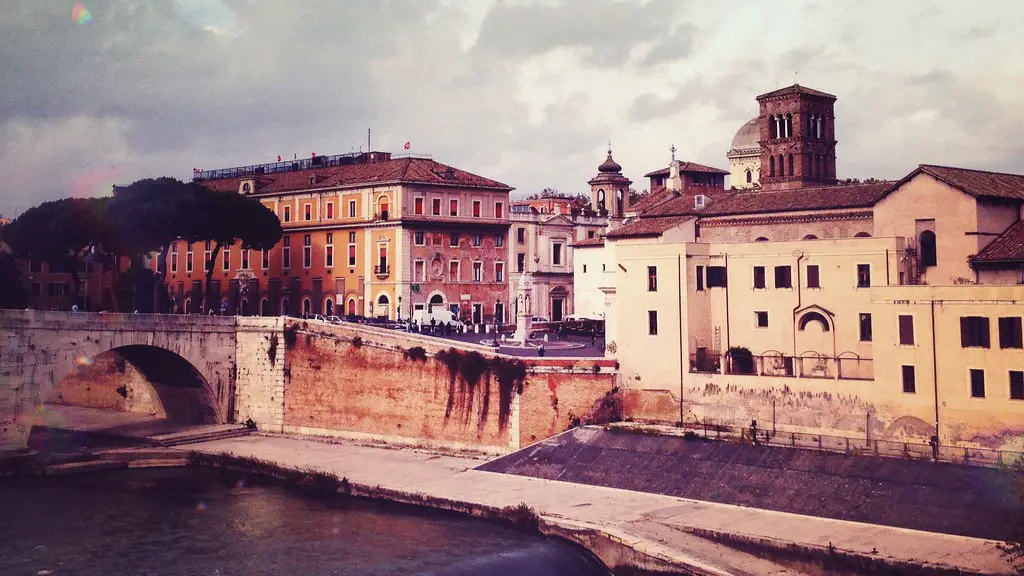Building Foundations for Ancient Rome
Ancient Rome was an empire that dates back to around 500 BCE. It was founded by Romulus and Remus and was the central part of the Roman Empire, also known as the Roman Republic, which survived until the 5th century CE. It was a remarkable achievement, allowing a single group of people to create and run a much larger, resource-rich empire.
The city of Rome set the foundations for the growth of the empire, becoming an independent city-state in 753 BCE. It was an incredibly advanced society for its time, and its citizens developed an array of industries and technologies that set the stage for Rome’s rise to glory. Ancient Rome was best known for its architecture, engineering and military successes.
The city was well-built, with a defensive wall providing protection from invaders and state-of-the-art aqueducts bringing clean drinking water. Ancient Romans also had a great knowledge of engineering, allowing them to construct roads, public baths and bridges. Thanks to these technological advancements, transportation and communication was vastly improved, allowing the city to expand and prosper. Ancient Rome was also a military powerhouse, conquering the known world with their vast armies and powerful weapons.
The legacy of Ancient Rome can still be seen today in many aspects of life. The Latin language is still used in many countries and fields, literature and philosophy were shaped by the period of the Roman Empire, and the Roman legal system still influences many legal systems all over the world.
The Glory Days of Rome
It is no exaggeration to say that the glory days of Rome occured during the rule of Julius Caesar and Augustus, who ruled from 27 BCE to 14 CE. It was during this time that Rome’s borders expanded, reaching their greatest extent having spread from Britain to northern Africa.
The reign of Caesar and Augustus also saw impressive monumental projects, such as the Forum of Augustus, the huge temple dedicated to Mars Ultor and the reconfiguration of the Comitium. Caesar also made political decisions that strengthened the internal structures of the government, such as granting the right of self-government to the cities of Italy.
Rome also reached its peak in terms of culture, with impressive playwrights such as Seneca, literary works by Virgil and Terence, and archaeological discoveries of new technologies and materials. During this time, Rome became a centre for learning, art and culture, producing some of the best works of the ancient world and helping to shape the culture of the Western world until this day.
Decline and Fall of the Roman Empire
The gradual decline of Ancient Rome began in the 3rd century CE and continued until the fall of the Western Roman Empire in 476 CE. In 284 CE, Diocletian was crowned Emperor, and he began a series of reforms and reorganisations of the government and military. He made drastic changes to the structure of the government, consolidating power by appointing two other emperors to rule alongside him. These changes sparked a period of instability and division, and the once great empire started to see its power fading.
The fall was hastened by external forces such as the invasions by foreign peoples and the weakening infrastructure of Roman territories. The central authority of Rome slowly faded, and soon, the Western Roman Empire found itself in a weakened position, gradually losing its sovereignty and control over its territories. This ended with the fall of the Western Roman Empire in 476 CE, signalling the end of Ancient Rome.
Modern Day Relevance of Ancient Rome
Though the Roman Empire is long gone, it has had a major influence on our modern world. Indeed, Rome has become an integral part of the European culture, with its language and way of life defining much of what we know today as “Western civilization”. From education to politics, the Roman Empire’s impact can be seen in almost all aspects of life.
The Romans also gave us the Latin language, which is still used as a lingua franca in many countries today. In addition, many of the sciences that we rely on today, such as biology, geography, engineering and architecture, first developed in Rome. Its laws, art and literature have all left a lasting legacy in our modern-day lives. Though the Roman Empire is long gone, its legacy lives on.
Roman Technology and Scientific Advancements
Although the Romans is best known for their military conquests and political reforms, they were also innovators and experts in various fields. Much of their technologies and advancements had a lasting impact on the world. In terms of engineering, the Romans developed some of the first roads, aqueducts and bridges, allowing them to transport goods and build expanded cities. They were also at the forefront of medical advancement, introducing new treatments and medicines that are used in modern times.
In addition, the Romans used their advanced understanding of mathematics to create incredibly detailed maps of the known world. This allowed them to better manage their expansive empire and increase the efficiency of their trade networks. Moreover, the Romans acquired a great understanding of physics and chemistry, which allowed them to develop sophisticated methods of metalworking and metallurgy.
The Romans also had a great interest in literary and philosophical works. They wrote detailed commentaries on Virgil and Homer’s epics and developed their own works such as Pliny’s Natural History and Seneca’s tragedies. They were also great builders, using their expertise to construct vast monuments and buildings, ranging from the Colosseum to the Pantheon.
The Influence of Religion on Rome
The religion of Ancient Rome was a polytheistic belief system that revolved around the worship of various gods. It was the predominant religion of the Roman Empire and it was central to the lives of its citizens. The home of the gods was thought to be Mount Olympus, and sacrifices were made to the gods in order to bring luck, good fortune and success to the Empire.
Religion also played an important role in politics. Political leaders sought to win favour from the gods, and the gods were even said to have chosen the rulers of the city. It was thought that divine fate would determine the outcome of battles and all other major political decisions.
Religion was deeply entrenched in all aspects of Roman life. There were numerous festivals for the gods, and many rituals and rites of passage taking place. People also followed strict taboos, such as never eating garlic, which was thought to guarantee prosperity and fertility. Religion played a major role in Rome, and it had a great influence on the way the people lived their lives.
The Spread of Roman Influence Across the Globe
The Roman Empire eventually spread its influence to many parts of the world, with citizens throughout the known world becoming Romanised. The spread of Roman culture was aided by the existence of the Roman colonies, which were scattered in all directions after the fall of the Western Roman Empire.
The Roman Empire’s reach extended through trade routes and alliances, and its cultural and political influences extended beyond its physical borders. Roman culture subsequently spread to France, Britain and other parts of Europe, as well as to parts of the Middle East and North Africa.
The rise and spread of Christianity was also a major influence in Roman culture, as it became the primary religion of the Empire. The early Christian church adopted Roman culture and values, and the language, architecture, art and literature of the Roman Empire all began to integrate aspects of Christianity as well.
Rome’s influence also spread to the New World and the Far East, and its legacy can still be seen today in many places. From the Latin language to the philosophy of Confucius, the legacy of Rome is still felt across the world.
Roman Ruins and Artifacts
The scope of Rome’s cultural and scientific accomplishments and its political and military power can still be seen in the ruins and artifacts of Ancient Rome. The iconic Colosseum stands proud, as a symbol of the greatness of Rome and a reminder of the entertainment and spectacle that Julius Caesar’s rule provided. The Pantheon is another impressive architectural marvel that still stands.
The ruins of Roman villas and aqueducts also remain, providing a glimpse into the lives of the Roman upper classes. Artifacts such as coins, statues, pottery and jewelry have been unearthed, offering us insights into the culture and customs of Ancient Rome. The ruins, artifacts and works of art from the period are a testament to the skill and industry of the Roman people.
Art and Culture during the Roman Empire
The ruins of Ancient Rome also mark its cultural accomplishments. Roman artisans produced statues, ceramics and paintings of considerable beauty, that still display the skill of the Roman people. Pliny’s Natural History and works by Seneca, Virgil and Terence are still studied to this day, offering us insights into the Roman way of life.
Music and theater were also popular during the Roman Empire, and the amphitheaters of Rome provided a great platform for musicians and actors to showcase their talents. Participation in entertainment and theater was so important, that many Roman citizens devoted their lives to it, setting a precedent for culture and the arts which we still honour today.
Conclusion
The time period Ancient Rome is best known for is the time of Julius Caesar and Augustus, where the Empire reached its greatest physical extent, extended its political and cultural influence, and experienced a period of peace and prosperity. A great legacy remains, with many traces left in our modern-day lives, from the language we speak to the technology and industries we use. Ancient Rome was a great accomplishment, and its legacy continues to live on.
